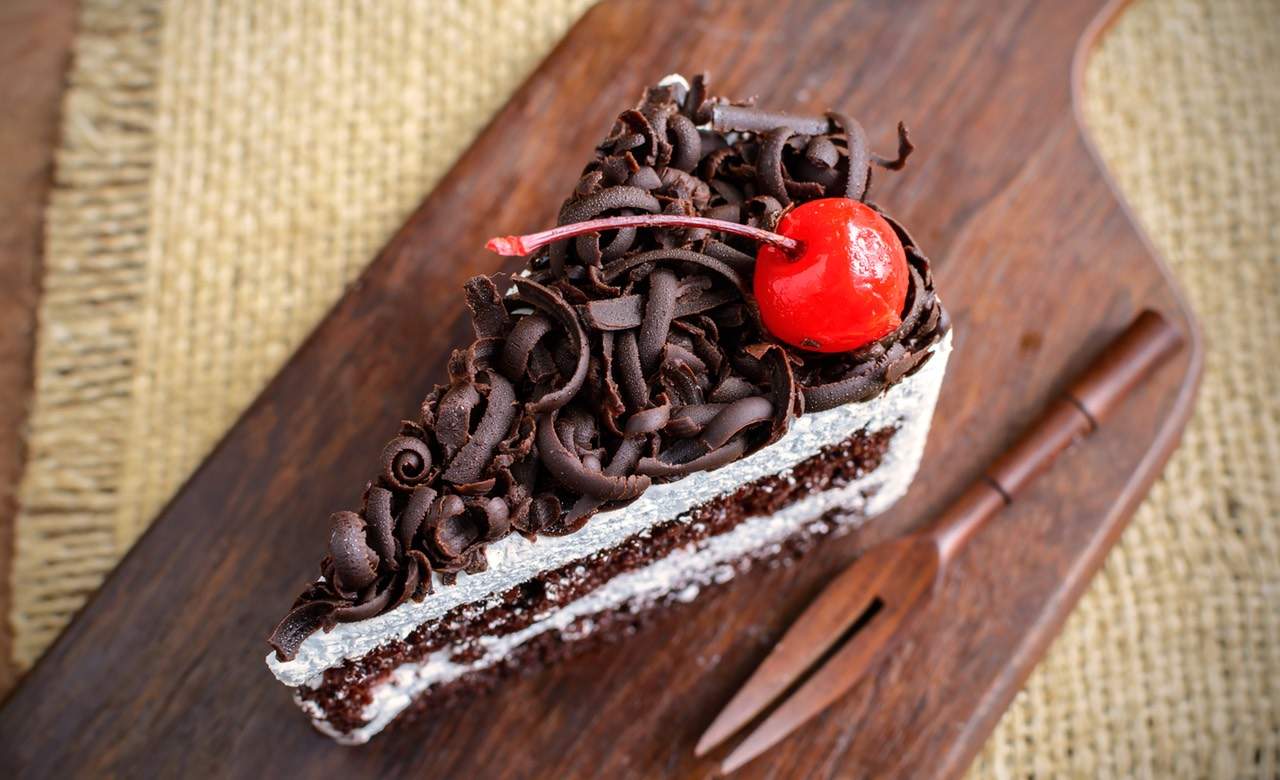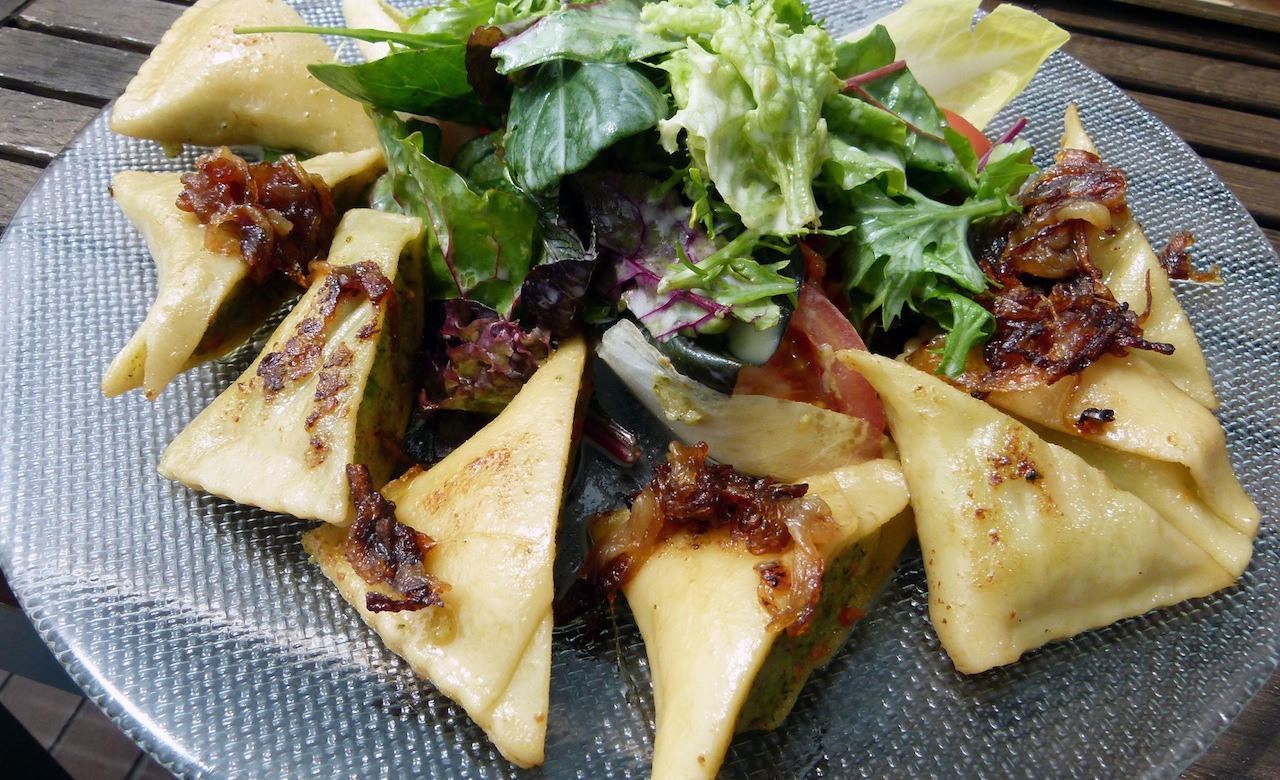Ten Meals Worth Travelling to Germany For
Pancake soup, spatzel and black forest cake make it worth the trip alone.
Many a poor traveller has ventured to Germany in hope of culinary enlightenment, only to binge on pretzels and bratwurst, thinking that was it. Don't be like those suckas. German cuisine is more than just carbs and cream — it's carbs and cream cooked and combined better than anywhere else in the world. Ignore the recent meat vs. health studies, forget about your fat RDI and jump on the nearest jumbo to Frankfurt and chow down.
![]()
MAULTASCHEN
Imagine a thick pasta skin that's filled with a smoked meat and then fried in butter — kind of ravioli on steroids — and you've got maultaschen. It's a German specialty that tends to be a menu staple in most southern restaurants. The only thing better than how tasty these pockets of flavour are, is the story behind them. The common folklore is that during Lent, when Catholics and other Christians were encouraged to refrain from eating meat, German monks would make the maultaschen. They figured the meat was concealed under the pasta dough and what they couldn't see, neither could God.
Where to find it: Some of the best (and most famous) maultaschen in Germany can be found Zum Hasenwirt, a small restaurant in Stuttgart.
![]()
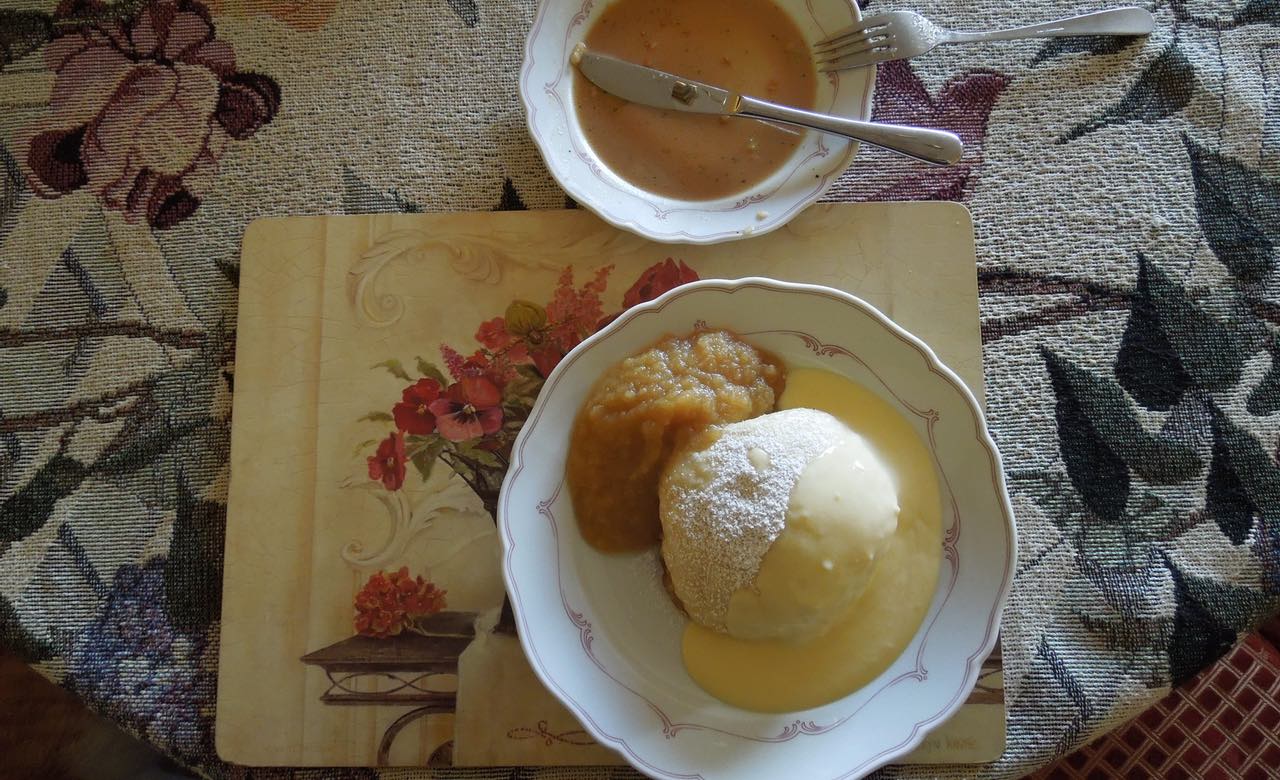
conticium via Flickr
DAMPFNUDEL
Dampfnudel is a southern German specialty that you might be hard pressed finding in the big cities. That means your best chances of nabbing one of these fluffy, sweet buns is trekking to some of Germany's quaint little villages. Dampfnudel is a like a sweet unfilled Chinese bun, about the size of a fist, that's steamed in sugared milk and fried in butter to give it a crispy bottom. It's most often served with berries, vanilla sauce and jams.
Where to find it: Dampfnudeln-Uli is a Bavarian restaurant in Regensburg that specialises in this sweet buns and have done so for over 70 years.
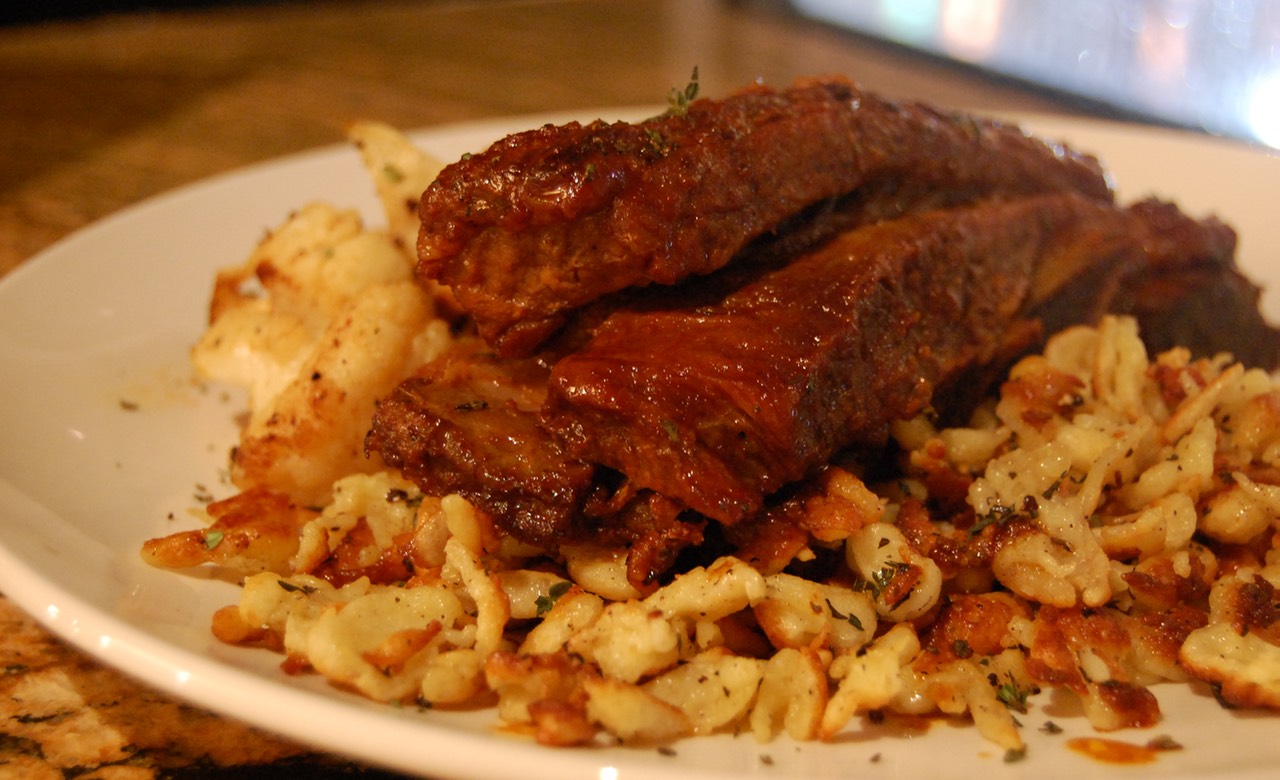
stu_spivack via Flickr
SPÄTZLE
Spätzle is to the Germans what pasta is to the Italians. Made with eggs and flour and boiled till it firms up, the almost rubbery pasta-like pieces are eaten as is, or fried up in oil or butter. Its texture is similar to that of gnocchi, though its taste is rather bland — so it's best partnered with meat and gravy. It's one of those foods you'll have a little gag over eating the first time, then wake up in cold sweats craving a week later.
Where to find it: You'll find the best spätzle in small, German villages as it one of those foods that Oma makes best. But if you're in Berlin, check out Repke Spätzlerei. They're pros at the stuff.
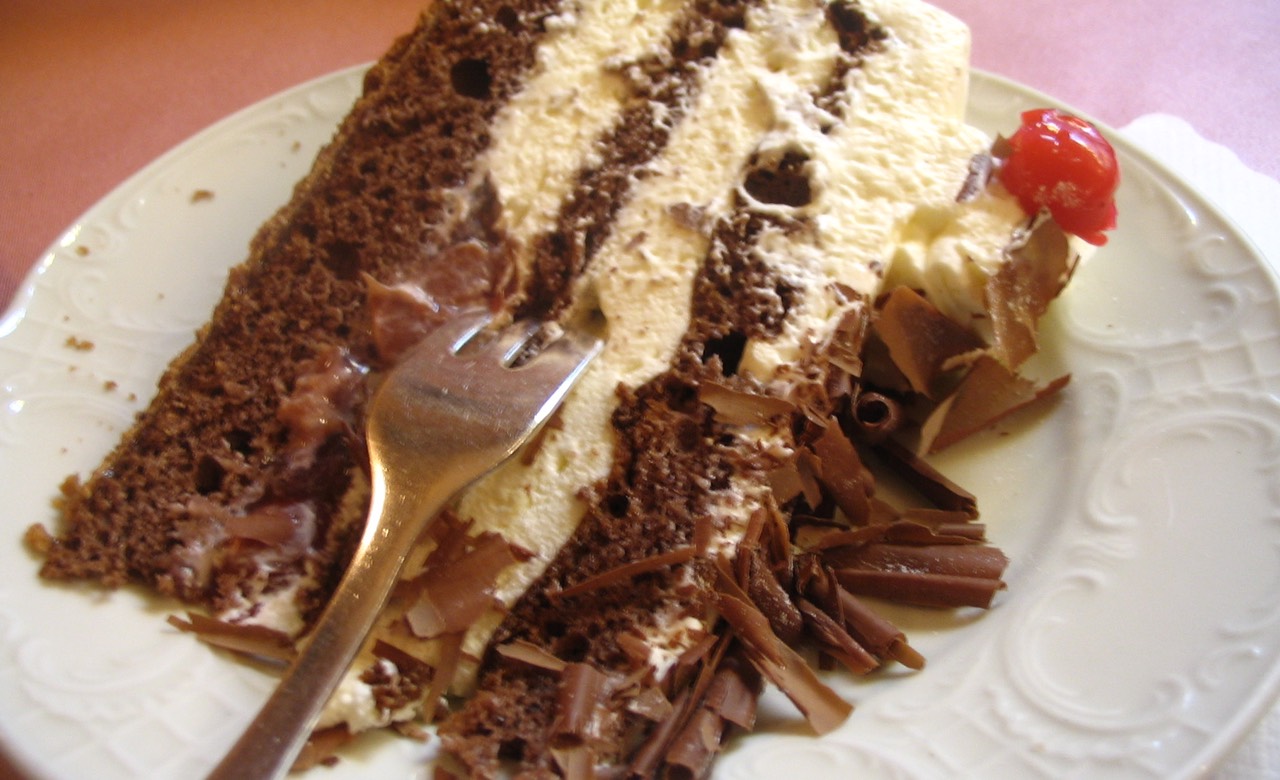
Benjamin Vander Steen via Flickr
SCHWARZWÄLDER KIRSCHTORTE
That's black forest cake to you. We're not talking The Cheesecake Shop variety (no offence) or your lazy one-tiered Coles attempt either (offence intended). Germany pulls out all the stops to make the chocolate cake thick and dense, the cream is fresh from the cow and the cherries just-picked from tree (FYI: cherries grow in Germany like eucalyptus leaves grow in Australia). As such, this cake is quite seasonal, and is best purchased and eaten in the German summer, aka cherry season.
Where to find it: If you're going to eat this cake, do it properly at at one of the few cafes that holds the original recipe. We recommend Cafe Schäefer in Triberg, a town in Baden-Württemberg, which is actually located in the literal Black Forest.
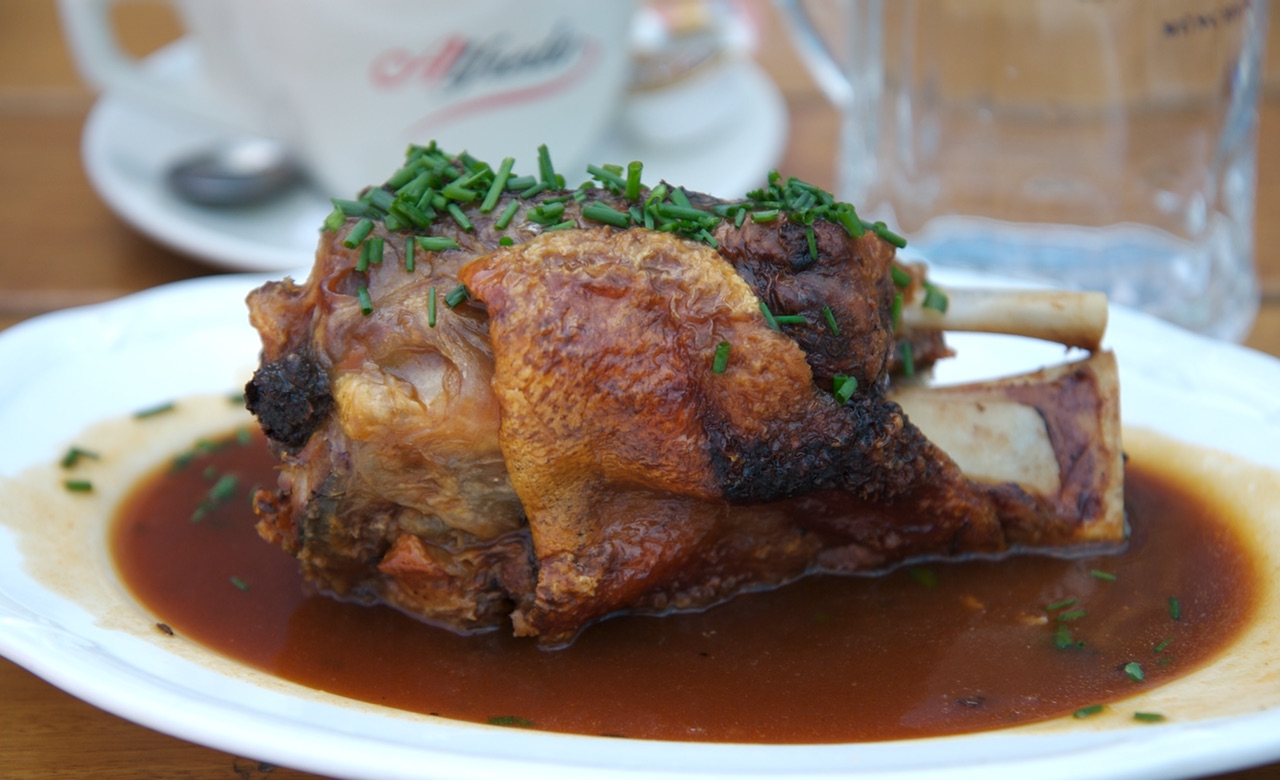
jay.tong via Flickr
SCHWEINSHAXE
This is what German dreams are made of. Succulent, slow-roasted porn knuckle with a thick, crispy, drool-inducing layer of crackling around the lot. Done well, the meat should fall of the bone once its crackling cloak has been consumed, and it's best served with something simple like a bread roll to soak up the juices. This is a Bavarian specialty, and makes a popular appearance at Oktoberfest.
Where to find it: Munich is home of the schweinshaxe, and is best eaten after consuming two litres of beer at Oktoberfest. For that reason, do yourself a favour and have your first schweinshaxe at one of the many beer tents at Munich's Oktoberfest.
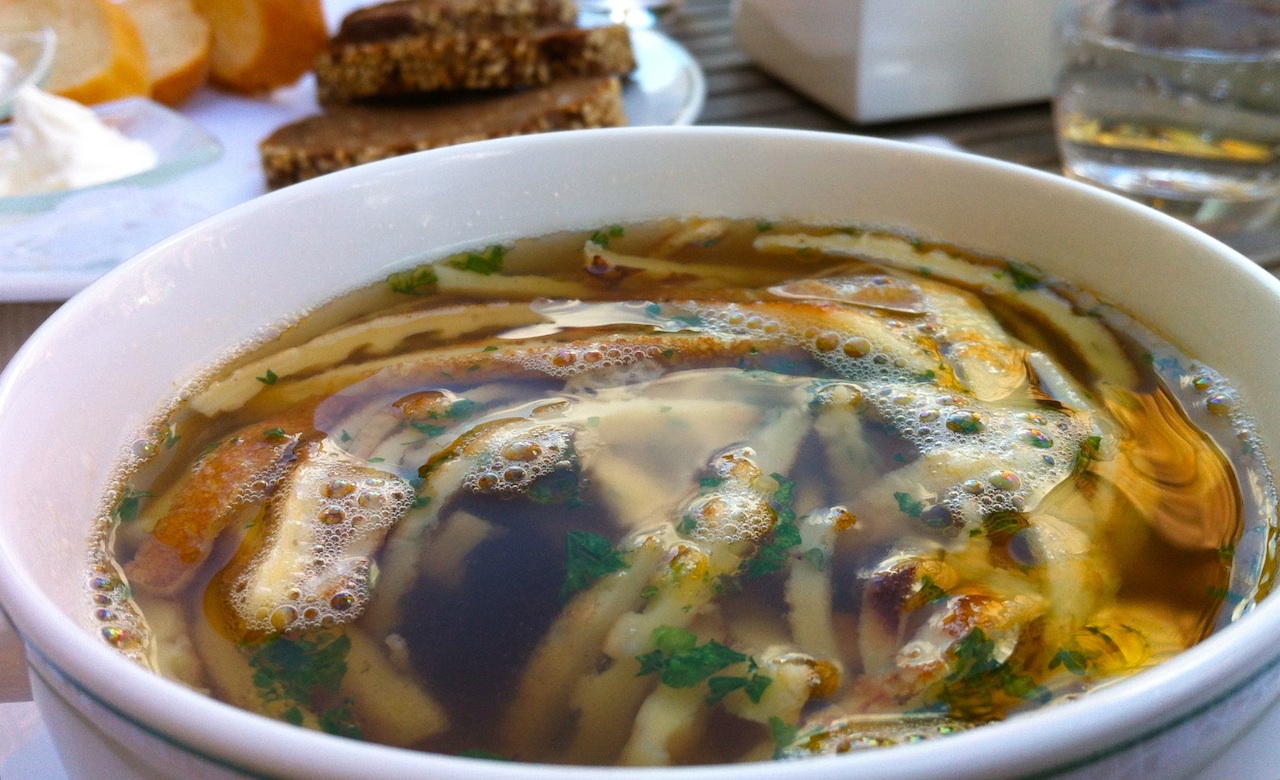
Jeremy Keith via Flickr
FLÄDLE SUPPE
On paper, flädle suppe sounds like an absolute nightmare: chopped up pancakes in a beef broth. But somehow — for some absurd reason that only the Germans know — it works. The flädle are plain crepe-style pancakes, tightly wrapped and cut into thin ribbons, while the suppe is the soupy broth. This dish is traditionally served as the first course of a wedding, but as it's so tasty and has quite a German fan-base, it's moved past special occasions and onto mainstream menus.
Where to find it: This soup is prevalent in both southern Germany and Austria, so if you're looking for the perfect taste, hover around the border. We suggest Weinstube zur Traube in Stuttgart.
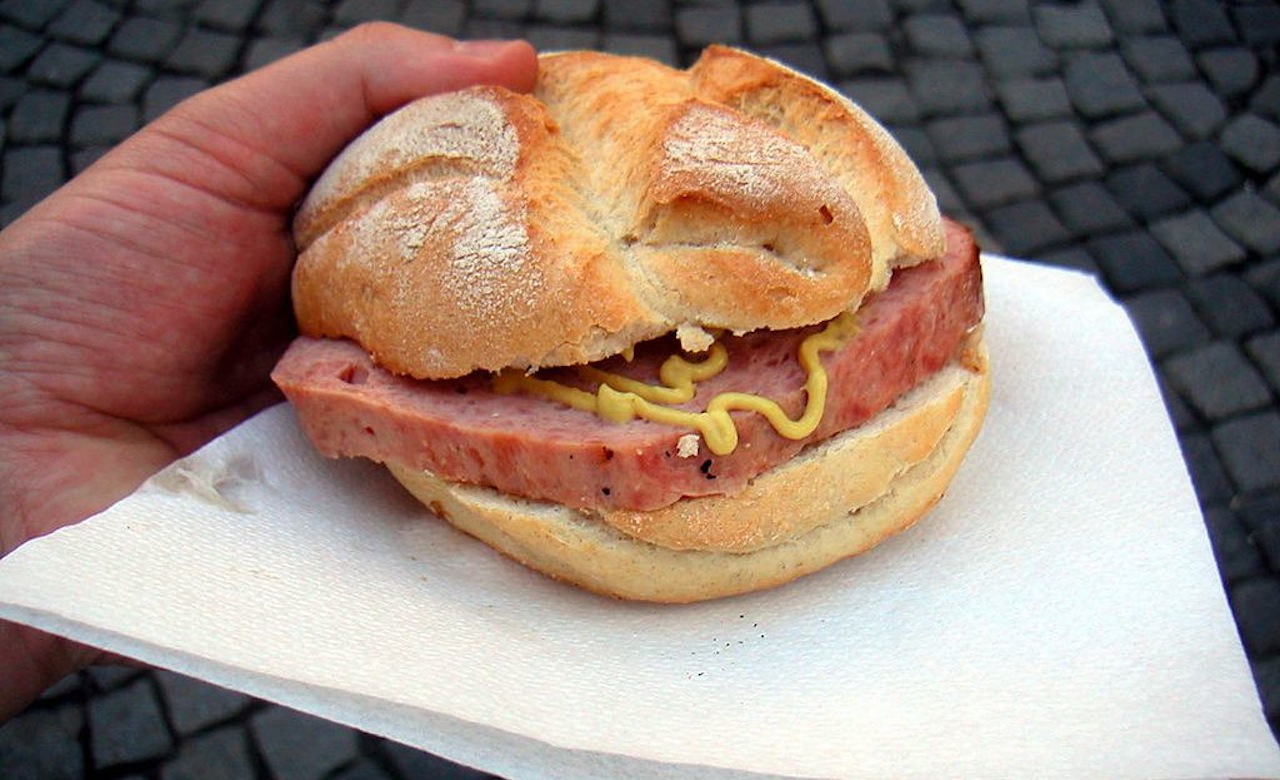
cyclonebill via Flickr
FLEISCHKÄSE
This is one of those nasty, kebab-equivalent foods that for some reason most Germans eat sober, but probably shouldn't. It doesn't take a fool to realise fleischkäse is processed to the nines, as it resembles something that makes spam look like a free-range chicken leg. And for that reason — and probably that reason alone — it's delicious (in a salty, fatty, indigestion-y kind of way). It tastes like hot dog meat, but is served as a thick slice on a bread roll with ketchup and mustard. Try it the day before you leave Germany so you have a geographical barrier between yourself and any more of them.
Where to find it: In Germany, a carvery or snack bar is called an Imbiss. Most hot ones will serve fleischkäse mit brötchen (with a bread roll).
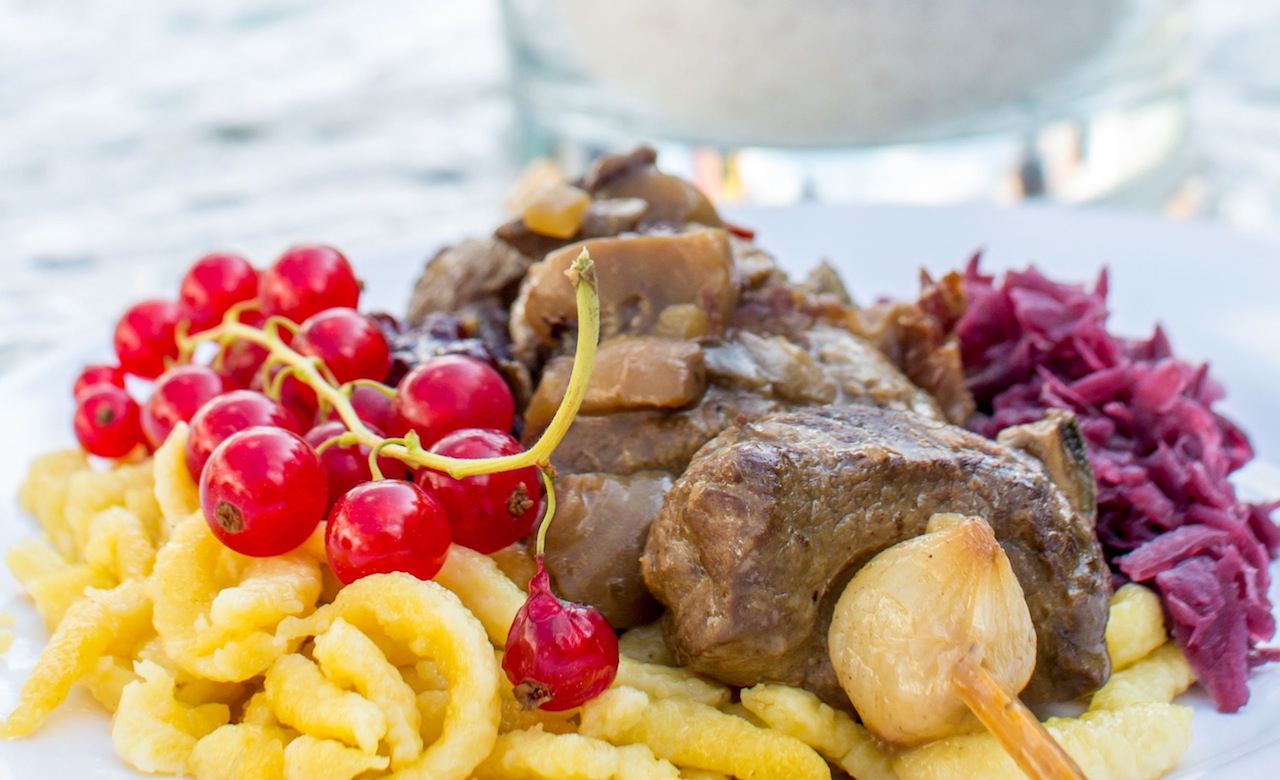
Oliver Hallmann via Flickr
WILDSCHWEIN
Game in Germany tends to hit dinner plates towards the beginning of winter, when it's hunting season. Wild boar (a nice way of saying feral pigs), deer, rabbit and pheasant all become a staple for those who can both afford and stomach it. Wildschwein (the aforementioned wild boar) is probably the gateway meat into eating German game. While it tastes like normal pork meat, it's also a lot richer, leaner and has that earthy taste that's common with wild animals. It's the most free-range form of meat you can eat — so regardless of your squirms, give it a shot.
Where to find it: Naturally, the culinary crux of Germany, Munich, homes many great traditional German restaurants that specialise in traditional hunting dishes. Restaurant Johannas at Hotel Neumayr is our hot pick. They serve wildschwein year-round, as well as deer, rabbit and pheasant seasonally.
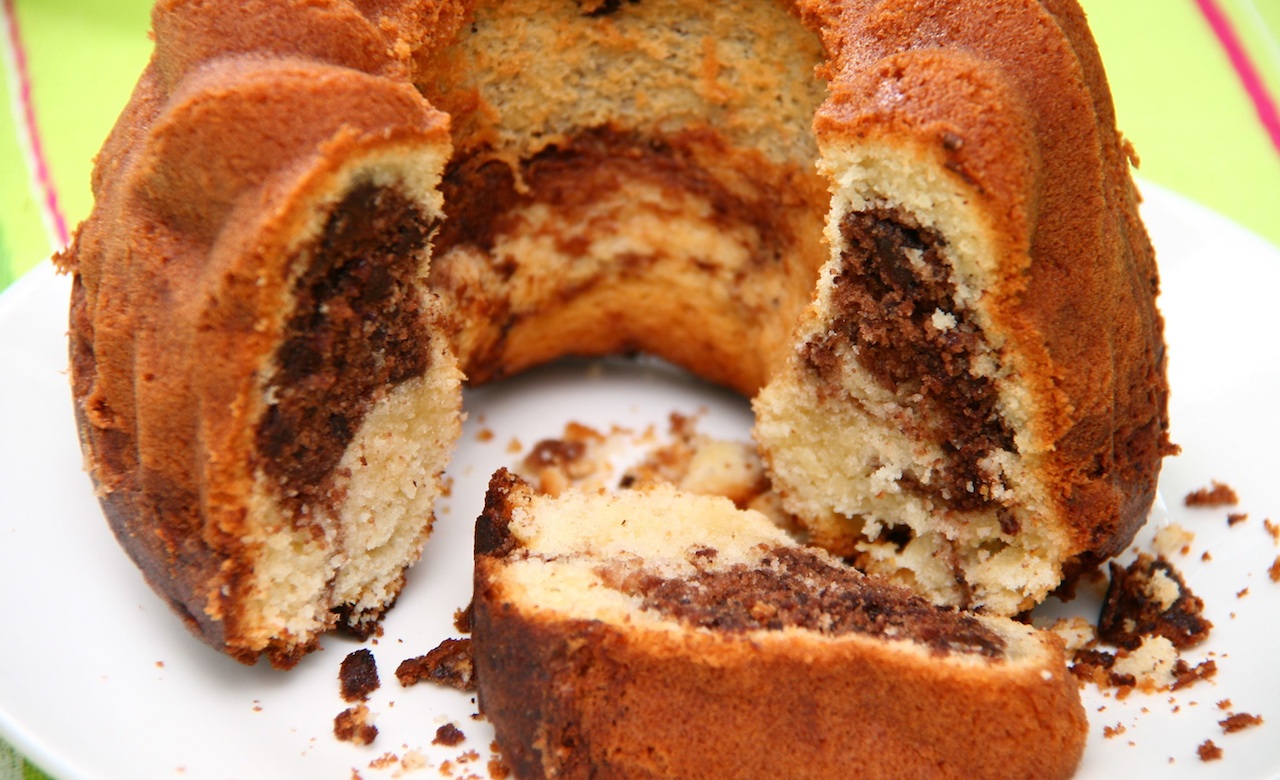
Katrin Morenz via Wikimedia Commons
MARMORKUCHEN
We know what you're thinking. That marmorkuchen is just a rainbow cake without the strawberry bit. Wrong. It's the softest, sweetest, most delicious cake this side of Europe — and lucky children all over Germany get to eat it everyday. Paired perfectly with a tea or coffee, marmorkuchen is kind of a like a butter-heavy tea cake that has the sweet tang of chocolate and, if you're lucky, an aftertaste of rum. It literally translates to marble cake, which every Aussie is probably already well familiar with. But it's different in Germany. It's better. But don't ask questions — just try for yourself.
Where to find it: Naturally, Germany homes some of the best bakeries in the world, and it's in these you'll find the best marmorkuchen. If you're in Berlin, Konditorei Buchwald makes undoubtedly one of the best — and have done for over 160 years.
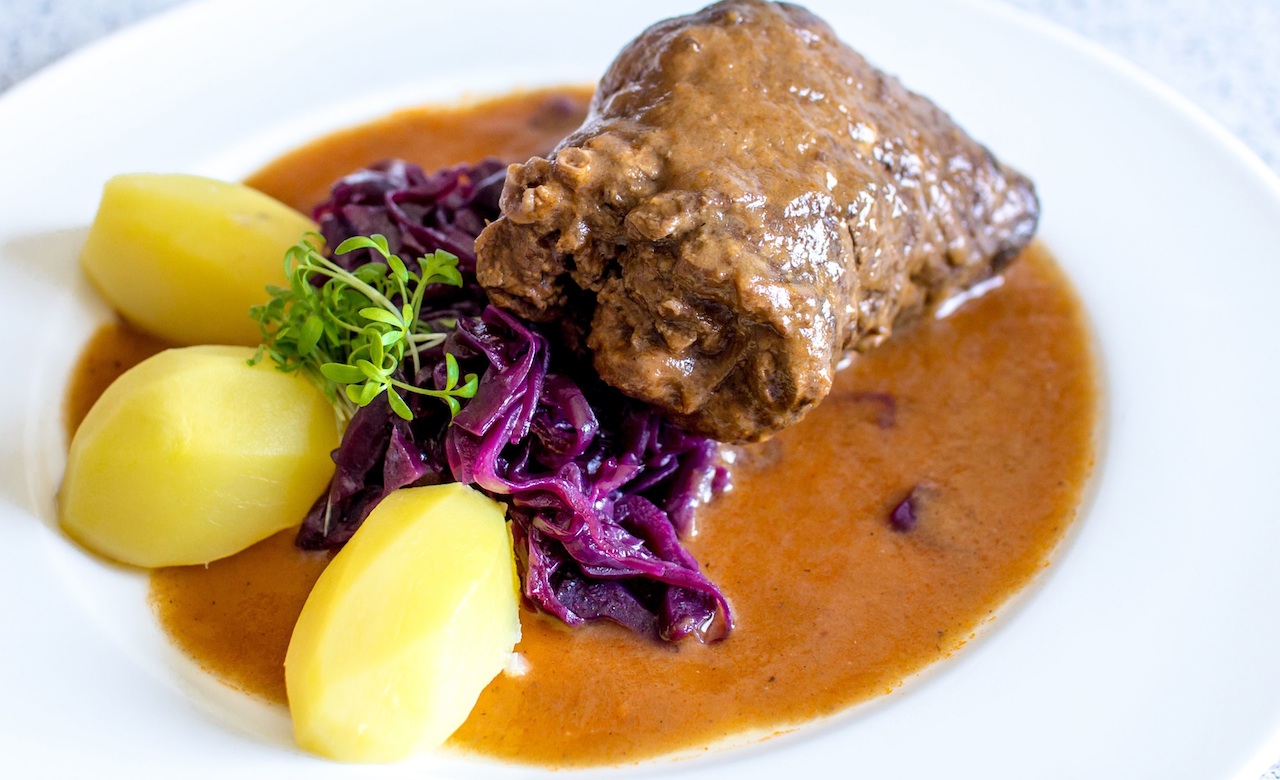
Oliver Hallmann via Flickr
RINDERROULADE
Rinderroulade just screams German farming food. Normally served with potatoes and cabbage, the actual roulade is a thin piece of beef steak that's spread with hot mustard, bacon and pickles, then rolled up and cooked in a thick beef sauce. It's kind of like a really intense burger, minus the bread and cheese. The roulade is cooked in the sauce for a good hour or so to get that melt-in-your-mouth texture. Fillings for rinderroulade are endless, ranging from Asian to Mediterranean varieties, but if you're chasing the best, stick to the original German mustard filling.
Where to find it: You'll find this meal at most traditional German restaurants. In Berlin, Kurhaus Korsakow is one of the most authentic, non-touristy German restaurants in trendy Friedrichshain, and happens do do a killer roulade.
Top image: Dollar Photo Club
